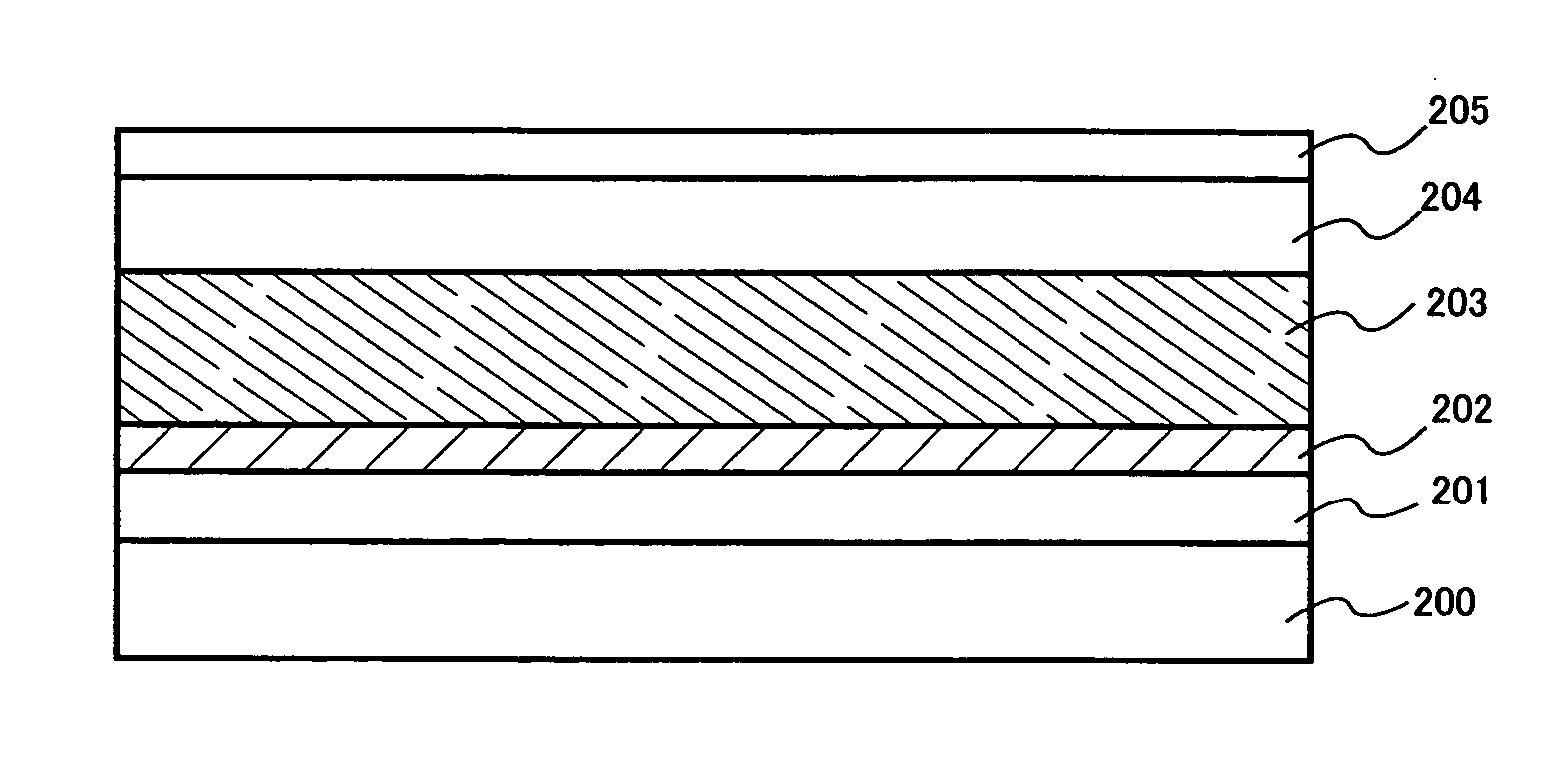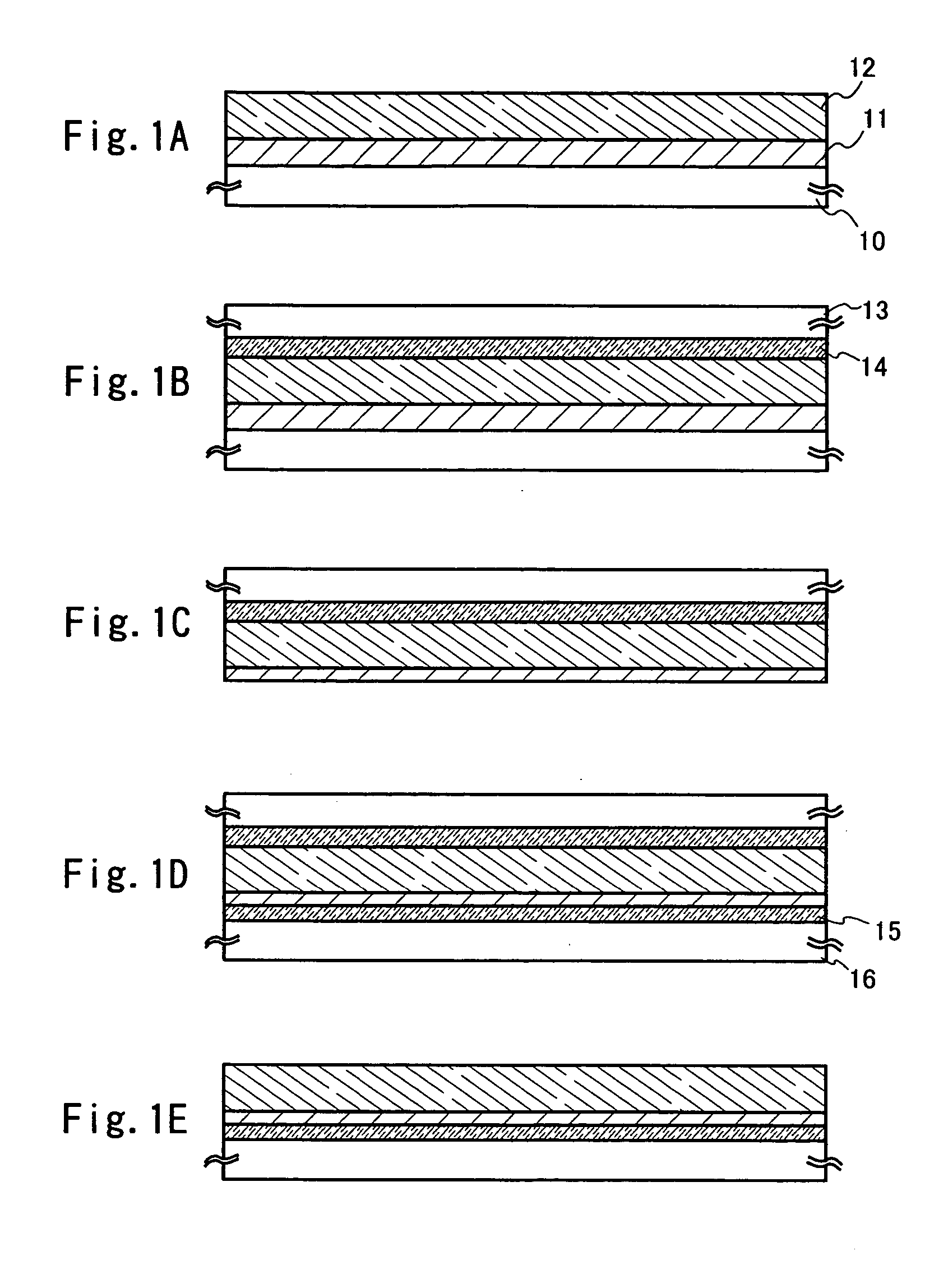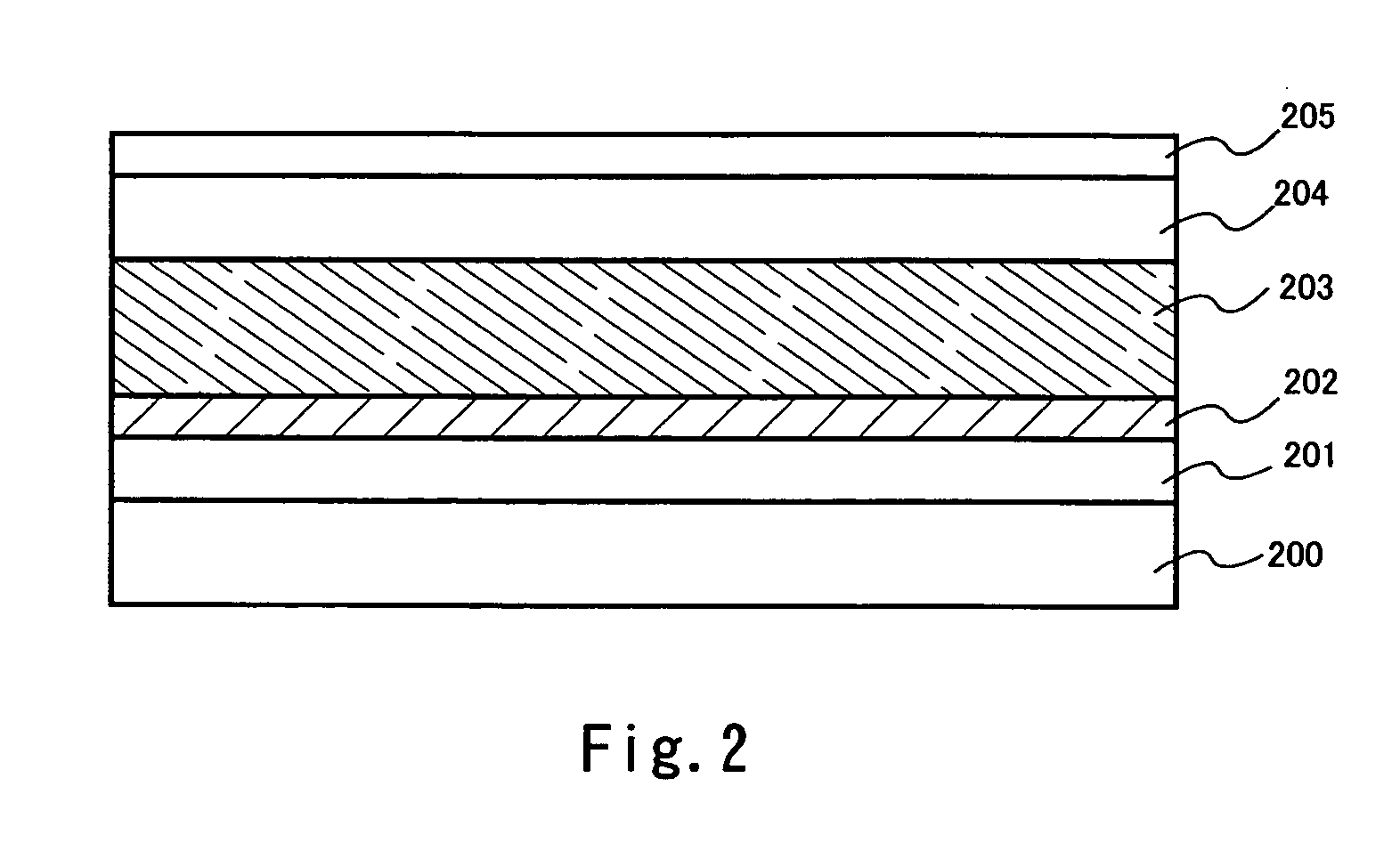Semiconductor device and manufacturing method thereof, delamination method, and transferring method
a technology of semiconductor devices and manufacturing methods, applied in semiconductor devices, identification means, instruments, etc., can solve the problems of fragility and heaviness to be enlarged, damage to a delamination layer, and polysilicon film cannot be formed directly
- Summary
- Abstract
- Description
- Claims
- Application Information
AI Technical Summary
Benefits of technology
Problems solved by technology
Method used
Image
Examples
embodiment 1
[0067] [Embodiment 1]
[0068] In this embodiment, a result of a delamination experiment and an audit observation of a transmission electron microscope (TEM) will be described.
[0069] First, as to a sample shown in FIG. 2, an AN 100 glass substrate (126.times.126 mm.sup.2) as a substrate and a film mainly consisting of tungsten (hereinafter referred to as a W film) deposited by sputtering as a metal film are laminated. Thereafter, a SiO.sub.2 film deposited by sputtering as a protective film forming a delamination layer, a SiON film deposited by CVD as a base film, and an amorphous silicon film deposited by CVD as a semiconductor film are laminated thereover.
[0070] Among the above samples, one to which heat treatment is not performed shall be A, another to which heat treatment at 220.degree. C. for one hour is performed shall be B, and the other to which heat treatment at 500.degree. C. for one hour and heat treatment at 550.degree. C. for four hours thereafter are performed shall be C....
embodiment 2
[0080] [Embodiment 2]
[0081] Next, a delamination experiment is carried out under a different condition for manufacturing the protective film, or as the absence or presence of the protective film on a W film is varied.
[0082] As shown in FIGS. 11A to 11D, the followings are prepared: sample 1 formed by sequentially laminating a SiON film 301 formed on a substrate 300 by CVD and a W film 302 formed by sputtering (FIG. 11A); sample 2 comprising a Si film 303 over a W film, formed by sputtering using argon gas, as a protective film (FIG. 11B); sample 3 comprising a SiO.sub.2 film 304 formed by sputtering using argon gas and oxygen gas instead of Si film (FIG. 11C); and sample 4 comprising a SiO.sub.2 film 305 formed by CVD using silane gas and nitrogen gas (FIG. 11D).
[0083] FIGS. 12A to 15A show TEM pictures of cross sections of respective samples 1 to 4. The frame formats corresponding to the respective TEM pictures are shown in FIGS. 12B to 15B.
[0084] As illustrated in FIGS. 12A to 15A...
embodiment 3
[0091] [Embodiment 3]
[0092] In this embodiment, a result of the observation of an oxide layer on the side of a substrate and the side of an amorphous semiconductor film after the separation using TEM will be shown.
[0093] A W film with a thickness of 50 nm is formed over a glass substrate by sputtering; a silicon oxide film with a thickness of 200 nm is formed thereafter by sputtering; subsequently, an silicon oxynitride film with a thickness of 100 nm is formed as a base film by plasma CVD; and an amorphous film with a thickness of 50 nm is formed as a semiconductor film likewise by plasma CVD. Then, heat treatment is performed at 500.degree. C. for 1 hour and at 550.degree. C. for 4 hours; a quartz substrate is adhered by using epoxy resin as a bond; and separation is performed by a physical means. The TEM picture of the W film and the oxide layer on the substrate side at this point is shown in FIGS. 19A and 19B. The TEM picture of the oxide layer and the silicon oxynitride film on...
PUM
| Property | Measurement | Unit |
|---|---|---|
| thickness | aaaaa | aaaaa |
| temperature | aaaaa | aaaaa |
| thickness | aaaaa | aaaaa |
Abstract
Description
Claims
Application Information
 Login to View More
Login to View More - R&D
- Intellectual Property
- Life Sciences
- Materials
- Tech Scout
- Unparalleled Data Quality
- Higher Quality Content
- 60% Fewer Hallucinations
Browse by: Latest US Patents, China's latest patents, Technical Efficacy Thesaurus, Application Domain, Technology Topic, Popular Technical Reports.
© 2025 PatSnap. All rights reserved.Legal|Privacy policy|Modern Slavery Act Transparency Statement|Sitemap|About US| Contact US: help@patsnap.com



